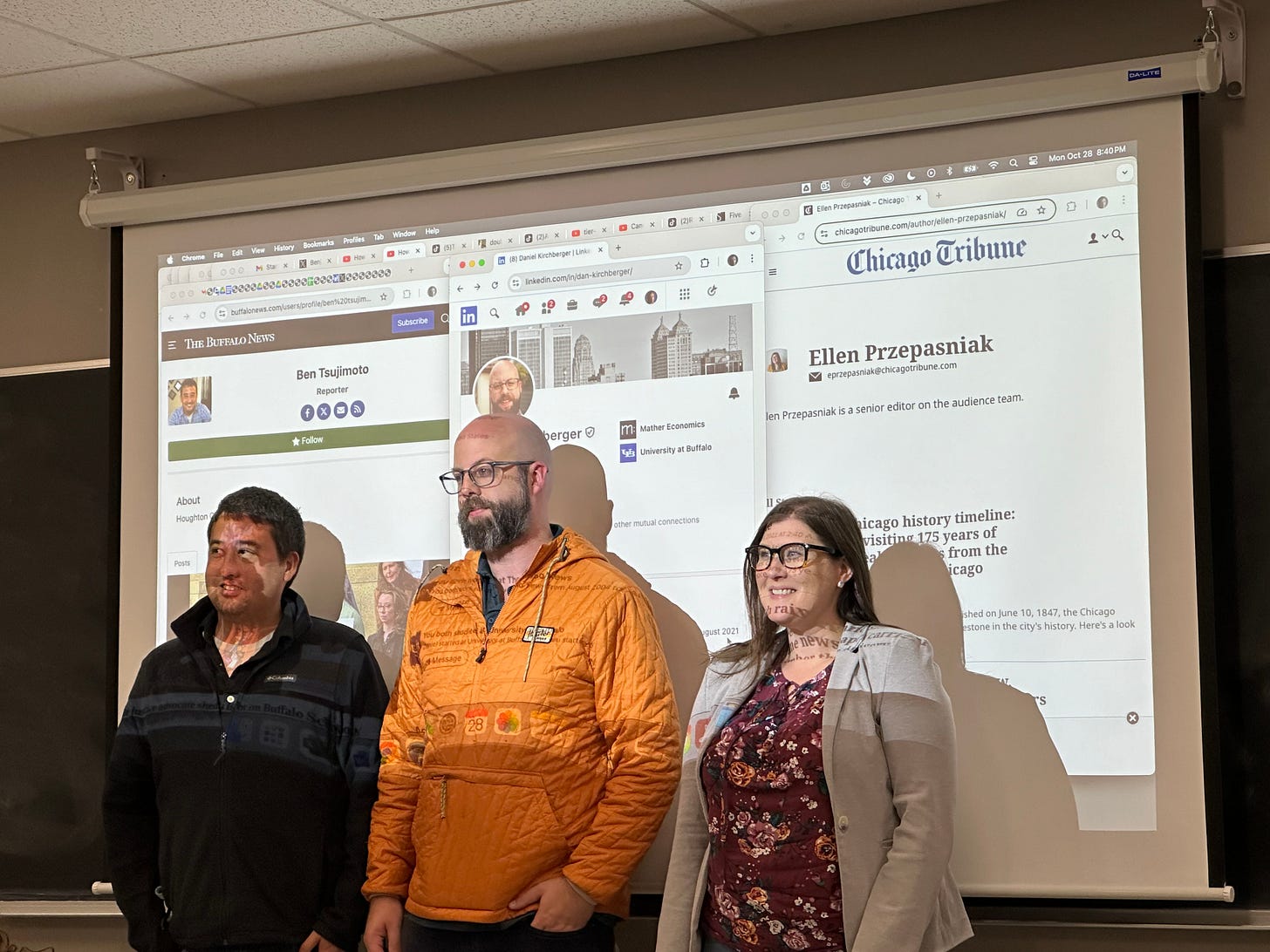The Ever Changing Nature of Journalisim
Or how three journalists helped to shape the perspectives of a small class of budding journalists. #Ubeng397
The field of journalism is being overtaken by AI articles, paywalls unethically sourced Tweets, and Tiktok’s claiming to be well-researched. We’ve strayed extremely far from the traditional well-written, well-researched paper articles our parents and grandparents were reading, being left with a shell of what once was. This week, journalists Ellen Przepasniak, Ben Tsujimoto, and Dan Kirchberger visited our class to partake in a press conference covering burning questions from budding journalists on the direction of the journalism field.
Journalism has shifted from a primarily text-based field to a predominantly digital field, being overrun with YouTube journalists and online article-sharing platforms such as Substack, yet it has never lost its charm. When Przepasniak and Tsujimoto were asked how journalism has changed in their time as writers, they both responded with their overwhelming response to change. Ellen spoke on the shift from social forms of referral to digital forms such as TikTok, citing the change in referral as a point of concern regarding decreased readers. The shift from physical forms of journalism such as newspapers and magazines to digital forms such as websites and Substacks has created an increased demand for paywalls and charged articles, which both Ellen and Dan cited as reasons for decreased traffic.
The world of journalism is changing constantly, from the way we share media to the way the field is run. There has been a massive shift in referral traffic, shifting from sharing through Twitter (X) and Facebook to being dome predominantly through search, leading journalists to have to optimize their works for services such as Google. Conversion rate becomes increasingly more important when an article's primary form of sharing is through search, leading many newsrooms to focus on the turnover rate of new subscribers to old subscribers. Ben spoke on the conversion rate of articles in the Buffalo News: “One thing that we’ve done a little bit more of recently is taken a look at those individual articles and whether or not they led to conversions. So an article may get 500 page views but that might just be from people who are already subscribed, the valuable metric is how many conversions we get for an article.” Journalism has greatly shifted from a word-of-mouth industry to a primarily online industry, being focused on digital forms of sharing and paywalled articles, rather than the tongue-in-cheek ways of sharing and paying that newspapers were fondly known for.
Despite paywalls deterring a lot of readers from making continued visits to news sources, many journalists have found new ways of pulling in new readers through consistently sharing articles similar to those that bring in high conversation rates. Ben spoke about how paywalls often deter the audiences that most need this news, preventing people in lower-income situations from having access to the news they deserve about their community. Journalists are actively trying to change this every day by making certain articles readily available to readers through dynamic paywalls, allowing readers access to a few articles of their choice before hitting them with a paywall, which allows readers to be informed on the topics they may have initially visited the publication for without immediately being deterred by a paywall.
Ellen, Ben, and Dan’s visit to our class left a huge impact on us as young journalists, informing us of what's to come in our future occupations and the way the field is changing. The constantly changing, and fast-paced environment of the journalism field is what initially pulls in many of its greatest writers, and I’m pleased to have been able to gain a greater knowledge of the way the field is shifting.




